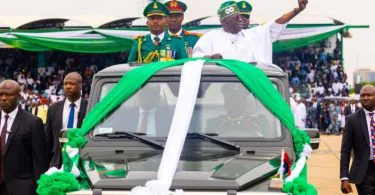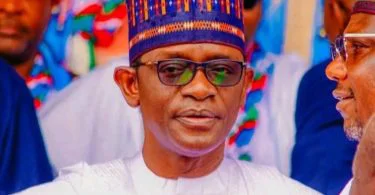Nigeria, officially known as the Federal Republic of Nigeria, is split into six geopolitical zones. During the presidency of General Sani Abacha, the country was divided into what are essentially state federations for administrative purposes. Throughout Nigeria, the various zones frequently pool their respective economic, political, and educational resources. States with similar ethnic groupings and/or shared political history were grouped in the same zone, rather than geographic location alone, to create the six zones. About 400 distinct ethnic groupings and 450 spoken languages coexist in Nigeria. For efficient resource distribution, the government had to combine like groups.
Nigerians from the Afenifere Renewal Movement (represented by National Publicity Secretary Mr. Yinka Odumakin), the Ohaneze Ndigbo (represented by the late Secretary General Chief Ralph Uwechue), and the Ijaw National Congress (represented by National President Mr. Joshua Benameisigha) have all advocated for the current six zonal divisions to be recognised in the constitution and strengthened to function as federating units in the new structure for Nigeria. Chief Nengi James, a Niger Delta activist, has said that the geographical zones should be recognised in the constitution “for all areas of the country to become one entity.” These organisations are campaigning for devolution of powers in a federal Nigeria, with the goal of giving the geopolitical zones more independence and responsibility for the management of resources within their borders.
Zone North Central
One of Nigeria’s six geographical zones, the North Central (or North-Central), encompasses the vast majority of the country’s Middle Belt. It consists of the Federal Capital Territory of Nigeria and the six states of Benue, Kogi, Kwara, Nasarawa, Niger, and Plateau. From Cameroon’s northern border to Benin’s southern border, the North Central covers the entire country’s width. Except for its western half, which is part of the West Sudanian savanna ecoregion, the ecosystem of this zone is dominated by the Guinean forest-savanna mosaic. The Plateau State was called after the Jos Plateau, located in the state’s east centre. About 20 million people call this area home, or about 11 per cent of the country’s total population. Cities in the North Central region of Nigeria have the highest populations, with Abuja, the country’s capital, located in the Federal Capital Territory, followed by Ilorin and Jos.
North West Zone
The North West (or North-West) is one of Nigeria’s six geopolitical zones and the name of a physical and political territory in the country’s northwest. Jigawa, Kaduna, Kano, Katsina, Kebbi, Sokoto, and Zamfara are its seven constituent states. The majority of the area lies within the tropical West Sudanese savanna ecoregion. Culturally, the majority of the zone is considered to be Hausaland, the indigenous cultural homeland of the Hausa people, who make up the most significant ethnic percentage of the northwestern population. However, there are sizable minorities of Fulani people and other groups, primarily in the periphery of the zone. Around 23 per cent of the country’s total population lives in this area. Kano and other major centres in Nigeria’s North West contribute significantly to the country’s economy. Still, rural communities across the country suffer from low living standards, high crime rates, and a lack of government support. Kano is the largest city in the northwest, the second largest in Nigeria, and the twentieth largest in all of Africa. Kaduna, Zaria, Sokoto, Katsina, Gusau, Garki, and Funtua are also sizable cities in the region’s northwest.
North East Zone
The geographical and political region of northeast Nigeria is known as the North East (or North-East), one of Nigeria’s six geopolitical zones. It comprises six states: Adamawa, Bauchi, Borno, Gombe, Taraba, and Yobe. Nearly a third of Nigeria’s landmass is located in the North Eastern geopolitical zone, making it its largest. Regarding climate, the area is primarily split between the semiarid Sahelian savanna and the tropical West Sudanese savanna. Twelve per cent of the country’s total population lives in this area. Maiduguri and Bauchi are, respectively, the fifteenth and seventeenth most populated cities in Nigeria, and they also happen to be the two most populated cities in the North East. Cities like Bauchi, Yola, Mubi, Gombe, Jimeta, Potiskum, Jalingo, Gashua, and Bama also play a significant role in the economy and society of the region’s northern part.
South East Zone
A geographical and political region, the South East (or South-East) is one of Nigeria’s six geopolitical zones in the country’s inland southeast. Its five constituent states are Abia, Anambra, Ebonyi, Enugu, and Imo. The region is limited on the west by the Niger River, the North Central plateau, and the Cross River, and on the south by the Niger Delta. The southern portion consists of the Cross-Niger transition forests ecoregion, and the northern, drier part comprises the Guinean forest-savanna mosaic. Culturally, the majority of the zone is located in Igboland, the traditional territory of the Igbo people, who make up more than 90% of the region’s population. Despite being Nigeria’s most minor geopolitical zone, the South East contributes significantly to its economy thanks to its oil and natural gas deposits and expanding industrial sector. Approximately 10% of the country’s total population lives in this area. In addition to ranking as Nigeria’s tenth and fourteenth most populated cities, Aba and Enugu are also the most populated cities in the country’s South East. The cities of Onitsha, Umuahia, Owerri, Nnewi, Awka, and Abakaliki are all rather sizable and are located in the southeast.
South South Zone
As a geographical and political territory, the South South (or South-South) is one of Nigeria’s six geopolitical zones. Its constituent states are Akwa Ibom, Bayelsa, Cross River, Delta, Edo, and Rivers. The area includes the entire Atlantic coastline between the Bight of Benin and the Bight of Bonny. It encloses the Niger Delta, a crucial part of the region’s ecosystem and economy. South of the Cross-Sanaga-Bioko coastal woods are the Central African mangroves, followed by the Cross-Niger transition forests, the Niger Delta swamp forests, and finally, the Nigerian lowland forests in the zone’s interior. Even though the South South only makes up about 5% of Nigeria, it significantly impacts the country’s economy thanks to its rich oil and gas deposits. Twelve per cent of the country’s total population lives in this area. Port Harcourt and Benin City, respectively the fourth and fifth most populated cities in Nigeria, are also the most populous cities in the South South. Greater Port Harcourt, which includes the city of Port Harcourt and its suburbs, is the largest metropolitan area in the zone, with a population of around 3 million. Other cities in the South-South region include Warri, Calabar, Uyo, Ikot Ekpene, Ugep, Sapele, Buguma, Uromi, Ughelli, Ikom, and Asaba.
South West Zone
Located in the southwestern part of Nigeria, the South West (or South-West) is one of the country’s six geopolitical zones. There are a total of six states that make up this region. These are the states of Ekiti, Lagos, Ogun, Ondo, Osun, and Oyo. This zone encompasses the Atlantic coastline from the international border with the Benin Republic in the west to the South South in the east and the North Central in the north. Inland, the principal ecoregions are the Nigerian lowland forests in the south and east and the Guinean forest-savanna mosaic ecoregion in the drier northwest. The South West is divided by the Central African mangroves in its extreme southern coastal region. Nigeria experiences two distinctly different seasons: the rainy season (March to November) and the dry season (November – February). Harmattan dust is blown southward from the northern deserts during the dry season. Most of the zone is located in Yorubaland, the traditional territory of the Yoruba people, who make up the most significant single ethnic group in the region’s southern portion. The urban parts of the South West, especially Lagos and Ibadan, contribute significantly to the Nigerian economy, while the rural areas lag. Approximately 47 million people call this area home, or about 22% of the country’s overall population. To top it all off, Lagos is the most populous metropolis in Nigeria and the second most populous city in Africa. About 21 million people live in and around Lagos, making it the eighth-most populated metro area in the world. Other large cities in the southwest include Ibadan, Ogbomosho, Ikorodu, Akure, Abeokuta, Oyo, If, Ondo City, Ado Ekiti, Iseyin, Sagamu, Badagry, Ilesa, Obafemi Owode, Osogbo,







